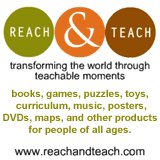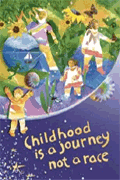(ref: Teaching With A Cultural Eye Program, BayCES.org)
Most educators have heard the term “cultural competence” – but have never received adequate preparation to appropriately respond to the challenges of a diverse classroom. How do teacher and administrator’s own cultural identities influence their interactions with students, parents, and colleagues? Here are some success factors proposed by Bay Area Coalition for Equitable Schools (BayCES)
- Knows students well: academically, socially, emotionally
- Builds relationships with students as people
- Involved in the cultivation of the relationship beyond the classroom
- Demonstrates a visible connectedness with each student
- Immersed into the students’ culture
- Provides a supportive classroom structure for academic, social, and emotional success
- Welcomes students into the classroom as a place that is theirs and not just the teacher’s (making it visible in how the classroom is set up)
- Provides necessary routines that help students become learners and feel safe in the classroom
- Emotes a "we’re all in this together" affect
- Encourages a community of learners who are responsible for each other inside and outside the classroom
- Promotes psychological safety in the classroom
- Promotes the intellectual leadership of students who are educationally, economically, socially, politically, and culturally disenfranchised
- Apprentices students into a learning community
- Has high academic standards and expectations for each student / all students
- Exudes publicly, positively, enthusiastically belief that each student can achieve those standards
- Knows very well and loves the subject matter, and conveys that to students (is not cynical about area of content knowledge or enthusiasm about it)
- Legitimates students’ real life experiences by building those experiences into the curriculum
- Makes every effort to welcome and celebrate their culture (urban youth culture, African American culture, Latino culture, etc.) as an integral part of the learning environment and process
- Helps them to code switch, know why, and also values their home culture and language
- Provides scaffolding into cognitive skills to think deeply about content
- Differentiates teaching and learning by learning readiness, interests, and learning styles (including culturally sensitive adaptations)
- Sees teaching as an art and themselves as artists
- Helps students make connections between their community, national, and global identities
- Views knowledge (hence curriculum) critically; develops students’ "habits of mind" to enable them to take a critical stance on their learning
- Helps students develop skills to participate fully in the construction of knowledge
- Helps students develop what Ladson-Billings calls their "socio-political awareness"
- Treats students as competent and developing
- Understands own race and its consequences (personally, historically, systemically)
- Is calm and non-reactive, but firm, fair, consistent
- Understands cultural behavior patterns (as a result, does not send more African American boys out for discipline)
- Does not ‘dis’ students in front of their peers
- Is not (if White) paralyzed by racial guilt or liberal paternalism
- Is (if a person of color) aware of the possibility of internalized racism and resulting low expectations or over-protectiveness of students of color
- Is their own selves with students, honest and human
- Has high self-esteem and a high regard for others
- Observes other culturally competent teachers interacting with and teaching students
- Participates in an equity centered professional learning community so as to be committed to ongoing growth and development in these areas
Bay Area Coalition for Equitable Schools (BayCES) based in Oakland, CA is working to dramatically improve educational experiences, outcomes, and life options for students and families who have been historically underserved by their schools and districts. Reach and Teach and Design Action are proud to have been involved in creating their organization’s website.
Please check out “My People Are… Youth Pride in Mixed Heritage” an iPride film promoting positive racial & ethnic identity in ALL children and highlighting the multiracial experience.
Filed under: Lists | Tagged: cultural competence, education, justlists, social justice, teachers | Leave a comment »



